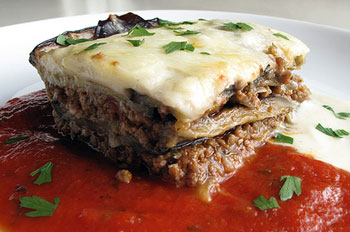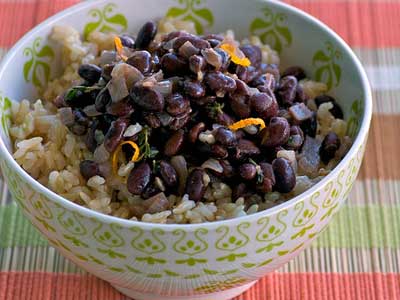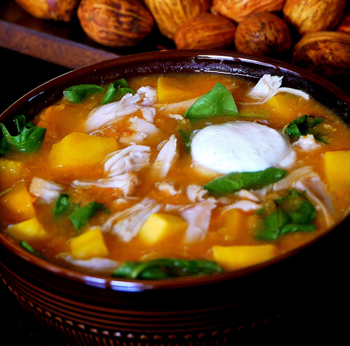 When I was growing up, my mom often made two different cucumber salads. For each of the salads, she sliced fresh cucumbers into very thin rounds. In one salad, the cucumbers bathed in a clear vinegar-water solution seasoned with sugar and lots of black pepper. I always liked that salad. My favorite, though, was the salad made of thinly sliced cucumbers swimming in a delicious sour cream sauce with sugar and vinegar stirred in along with thin, delicate threads of fresh dill weed.
When I was growing up, my mom often made two different cucumber salads. For each of the salads, she sliced fresh cucumbers into very thin rounds. In one salad, the cucumbers bathed in a clear vinegar-water solution seasoned with sugar and lots of black pepper. I always liked that salad. My favorite, though, was the salad made of thinly sliced cucumbers swimming in a delicious sour cream sauce with sugar and vinegar stirred in along with thin, delicate threads of fresh dill weed.
During the last couple of weeks I’ve been able to purchase English, or seedless, cucumbers at my local farmers market. These long, slender cukes are not really seedless, but the seeds are so small and insignificant compared to regular cucumbers, they seem seedless when they’re being eaten.
Last night I served the Sour Cream Cucumber Salad with grilled pork chops, potatoes and beans. This is a salad that is good with everything. My Hungarian mother always served Sour Cream Cucumber Salad with a traditional meal of Paprika Chicken and tiny homemade dumplings. Since my mom taught me how to make this salad, I often refer to it as Hungarian Cucumber Salad.

 It’s been a very, very short summer. I am not at all happy that 2 of my 3 kids are returning to school this Tuesday. WTF…it’s mid August! Packing lunches, getting up early(not a problem for me, but for them-YES), and routine is all part of this weeks drill.
It’s been a very, very short summer. I am not at all happy that 2 of my 3 kids are returning to school this Tuesday. WTF…it’s mid August! Packing lunches, getting up early(not a problem for me, but for them-YES), and routine is all part of this weeks drill. "It's all Greek to me" were practically the words that came out of my
mouth when I first saw this dish listed on a restaurant menu. I didn't
know what I was getting in to, but ever since that initial sumptuous
taste, I have been in love and obsessed with this classic Greek
casserole. Moussaka at first may appear to be a wintry meal, but late
summer with its abundance of dark purple eggplants or aubergines is
truly the perfect opportunity for making this dish. For me the sight of
an eggplant around this time of year automatically equals moussaka. And
truth be told, I love it so much that I usually end up eating the
entire casserole all by myself.
"It's all Greek to me" were practically the words that came out of my
mouth when I first saw this dish listed on a restaurant menu. I didn't
know what I was getting in to, but ever since that initial sumptuous
taste, I have been in love and obsessed with this classic Greek
casserole. Moussaka at first may appear to be a wintry meal, but late
summer with its abundance of dark purple eggplants or aubergines is
truly the perfect opportunity for making this dish. For me the sight of
an eggplant around this time of year automatically equals moussaka. And
truth be told, I love it so much that I usually end up eating the
entire casserole all by myself. This week we will be celebrating both
This week we will be celebrating both The other day I received a flyer advertising a romantic Caribbean get-away. It showed a scantily clad, deliriously happy couple lounging on the beach, cocktails in hand. I ripped it in half and tossed in the recycle bin. When you're married to someone whose Twitter handle is
The other day I received a flyer advertising a romantic Caribbean get-away. It showed a scantily clad, deliriously happy couple lounging on the beach, cocktails in hand. I ripped it in half and tossed in the recycle bin. When you're married to someone whose Twitter handle is 